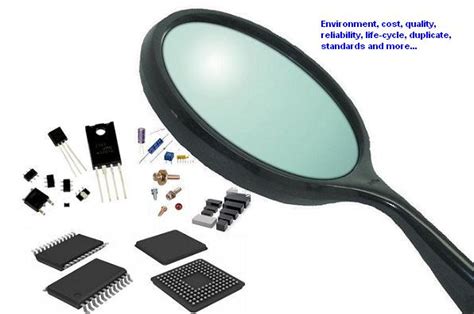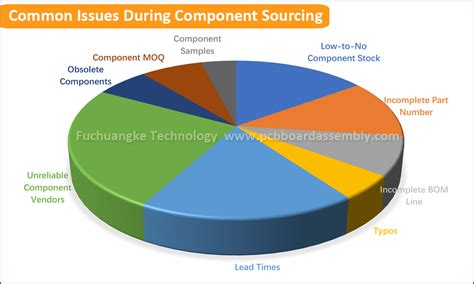What is an Integrated Component Library?
An integrated component library is a centralized database that contains information on all the electronic components used by an organization. It serves as a single source of truth for component data, including:
- Part numbers and manufacturer information
- Detailed specs and datasheets
- Approved vendors and pricing
- Availability and lifecycle status
- CAD models and symbols
By consolidating all this information in one place, an integrated library makes it easier for engineers to find the parts they need, compare options, and make informed decisions. It also helps ensure consistency and reduces the risk of errors or discrepancies between different systems.
Benefits of Using an Integrated Library for Sourcing
Implementing an integrated component library can provide numerous benefits for the electronic parts sourcing process, such as:
Improved Efficiency
With all component data readily available in one database, engineers can quickly search for and find the parts they need without having to dig through multiple sources or request information from suppliers. This saves valuable time and allows designs to be completed faster.
Better Part Selection
An integrated library makes it easy to compare different components side-by-side to find the best option for each application. Engineers can filter parts by key parameters, view complete specs, and even see real-time pricing and availability data to make optimal selections.
Ensured Consistency
By establishing a single, approved library of components, organizations can ensure that everyone is working from the same data set and using parts that meet quality and reliability standards. This helps avoid issues like duplicate or obsolete parts being specified in designs.
Reduced Costs
Centralizing component data enables better visibility into purchasing across the organization to leverage volume discounts, avoid overbuying, and optimize inventory. Having accurate manufacturer and pricing information also makes it easier to identify cost-saving alternatives.
Enhanced Collaboration
An integrated library breaks down silos between engineering, procurement, and manufacturing. All stakeholders can access the same component data, enhancing design for manufacturability (DFM). The library also provides a platform to share knowledge, such as adding engineer notes about particular parts.

Key Considerations for Implementing a Component Library
To gain the full benefits of an integrated component library for sourcing, there are several important factors to consider:
Data Quality
The library is only as good as the data it contains. It’s critical to establish processes for ensuring that component information is complete, accurate, and up-to-date. This may involve regularly importing the latest data from manufacturer sources and assigning clear ownership for data maintenance.
Library Structure
The schema and organization of the component library will impact its usability. Careful thought should be given to how parts are classified and what attributes are captured to enable intuitive search and filtering. Adherence to industry standards like IPC-2570 can help ensure a robust library structure.
Integration with Other Systems
To streamline the component sourcing workflow, the library should integrate with other key systems like EDA tools, PLM software, and ERP databases. This allows component data to flow seamlessly from design to procurement and manufacturing. An application programming interface (API) can enable real-time synchronization between systems.
Governance and Access Control
With many stakeholders relying on the component library, having well-defined governance is important. Permissions should be set as to who can add or modify content to maintain integrity. Formalizing component selection and approval processes ensures the library aligns with strategic sourcing practices.
Supply Chain Risk Management
Beyond basic component specs, the library should incorporate supply chain information to proactively mitigate risks. This includes data on environmental compliance (e.g. RoHS status), potential obsolescence, and geographic sourcing to identify components that could be impacted by geopolitical events or natural disasters.

Integrating the Component Library into the Sourcing Process
Once an integrated component library is established, it can be leveraged to optimize each stage of the electronic parts sourcing process:
Design
Engineering teams can use the library to rapidly identify and compare parts during initial design and schematic capture. Having approved components with complete specifications readily available helps avoid introducing problem parts into designs from the outset. Access to manufacturer datasheets and CAD models through the library also streamlines the design process.
Procurement
Procurement specialists can reference the component library to develop strategic sourcing plans aimed at driving down costs while ensuring continuity of supply. The detailed vendor information provided in the library can be used to secure optimal pricing, terms, and allocations. Procurement can also leverage data from past product builds to forecast demand and negotiate contracts for common parts used across projects.
Manufacturing
For contract manufacturers (CMs) building products, the integrated library serves as an authoritative resource for the parts required for each design. This helps avoid delays or inconsistencies that could arise if part information is communicated piecemeal from multiple teams. The CM can quickly check the status and availability of each part and proactively address any supply constraints by leveraging approved alternate vendors vetted in the library.

Emerging Trends in Electronic Parts Sourcing
The world of electronic component sourcing is constantly evolving. Some of the latest trends impacting sourcing include:
AI/ML for Predictive Analytics
Advanced algorithms are being applied to component data to enable predictive sourcing capabilities. By analyzing historical data, these tools can forecast demand for specific parts, identify potential shortage risks, and even recommend alternate components predicted to have optimal price and availability.
API Marketplaces
A growing number of suppliers are offering real-time access to their component data and ordering systems via APIs. This allows component libraries to be automatically updated with the latest information, and enables e-commerce integrations for instant purchasing directly from the library environment.
Circular Economy Initiatives
With growing concerns about e-waste and sustainability, more organizations are exploring sourcing of recycled and reclaimed electronic components. Component libraries can play a role by tracking parts harvested from decommissioned products and making them available for reuse in new designs.
Tables
Here are some tables providing sample data relevant to electronic parts sourcing and integrated component libraries:
Common Electronic Component Categories
| Category | Examples |
|---|---|
| Passive | Resistors, Capacitors, Inductors |
| Electromechanical | Connectors, Switches, Relays |
| Semiconductors | Integrated Circuits, Transistors, Diodes |
| Optoelectronics | LEDs, Photodetectors, Displays |
| Power | Batteries, Voltage Regulators, Transformers |
Key Attributes to Include in Component Library
| Attribute | Description |
|---|---|
| Manufacturer Part# | Unique identifier assigned by component manufacturer |
| Description | Brief summary of component function and form factor |
| Datasheet URL | Link to detailed specifications from manufacturer |
| Category | Component classification to enable filtering |
| Schematic Symbol | CAD file for representing component in circuit designs |
| Footprint | CAD model defining land pattern for PCB layout |
| Specs | Key parameters like resistance, voltage, tolerance |
| Manufacturers | List of approved sources for procuring component |
| Pricing | Cost data based on quantity breaks |
| Lifecycle Status | Active, Not Recommended for New Design (NRND), Obsolete |
Frequently Asked Questions (FAQ)
What is the difference between a component library and a parts catalog?
A parts catalog is typically a static list of components from a particular supplier, focused on providing basic information for purchasing. An integrated component library is a more comprehensive database that combines technical specs, CAD data, and supply chain information across multiple vendors to support the entire product development process.
How often should the data in a component library be updated?
The frequency of updates depends on the type of data and the sources being used. Basic component specs that don’t change frequently could be updated quarterly, while more dynamic supply chain data like pricing and availability should be refreshed on a weekly or even daily basis. Automated data imports from manufacturer and distributor APIs can help ensure the library stays current.
Who is responsible for maintaining an integrated component library?
Often a librarian or component engineer is designated to oversee the library and ensure data remains accurate and up-to-date. However, responsibility for contributing and maintaining different types of data may be distributed across various roles. For example, the engineering team may own providing specs and CAD models, while procurement handles pricing and vendor data.
Can a component library include both mechanical and electrical parts?
Yes, many organizations are moving towards consolidated libraries that incorporate all the parts and assemblies used in their products, both mechanical and electrical. While the types of data captured may differ, including all components in a central library can provide benefits like ensuring consistency between electrical and mechanical CAD designs.
How can a component library help with Obsolescence management?
A component library can proactively flag parts that are designated as Not Recommended for New Designs (NRND) or are nearing end of life (EOL). This allows engineers to avoid specifying those parts in new projects. The library can also provide data on recommended substitute parts to use in place of obsolete components in existing designs, helping mitigate supply disruptions.
Conclusion
In today’s fast-paced electronics industry, efficient component sourcing is essential for getting successful products to market quickly and cost-effectively. By implementing an integrated component library that centralizes data from engineering, procurement, and manufacturing, organizations can streamline the sourcing process and make better decisions throughout the product lifecycle.
As electronic components become increasingly complex and supply chains grow more globally interconnected, having a robust system for managing component information will only become more critical. Investing in a comprehensive, well-maintained component library is a key step to optimizing the sourcing process and ultimately driving competitive advantage.

No responses yet